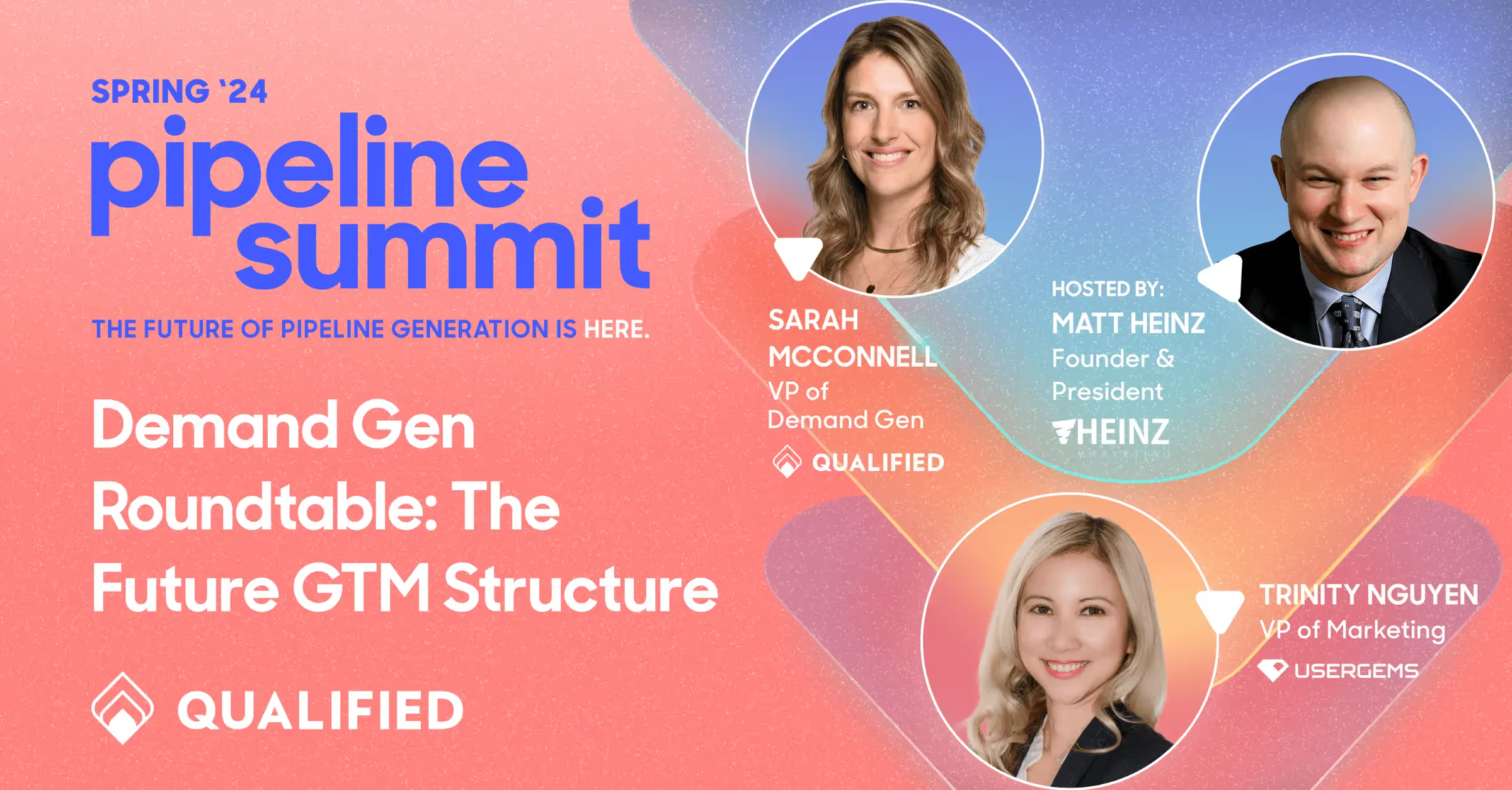Demand Gen Roundtable: The Future GTM Structure
Should BDRs live in the marketing or sales org? Learn how two teams structure their BDR relationships and why it works for them.






Should BDRs live in the marketing or sales org? Learn how two teams structure their BDR relationships and why it works for them.



Stay up to date with weekly drops of fresh B2B marketing and sales content.
Should BDRs live in the marketing or sales org? Learn how two teams structure their BDR relationships and why it works for them.




Stay up to date with weekly drops of fresh B2B marketing and sales content.
Should BDRs live in the marketing or sales org? Learn how two teams structure their BDR relationships and why it works for them.




Stay up to date with weekly drops of fresh B2B marketing and sales content.
Should BDRs live in the marketing or sales org? Learn how two teams structure their BDR relationships and why it works for them.



Discover how we can help you convert more prospects into pipeline–right from your website.